Koi fish origin traces back to the 19th Century where Japanese farmers caught carp, kept and bred them to get the colorful fish we have today. Their native habitat is freshwater and, in the right conditions, can grow up to 3 feet in length.
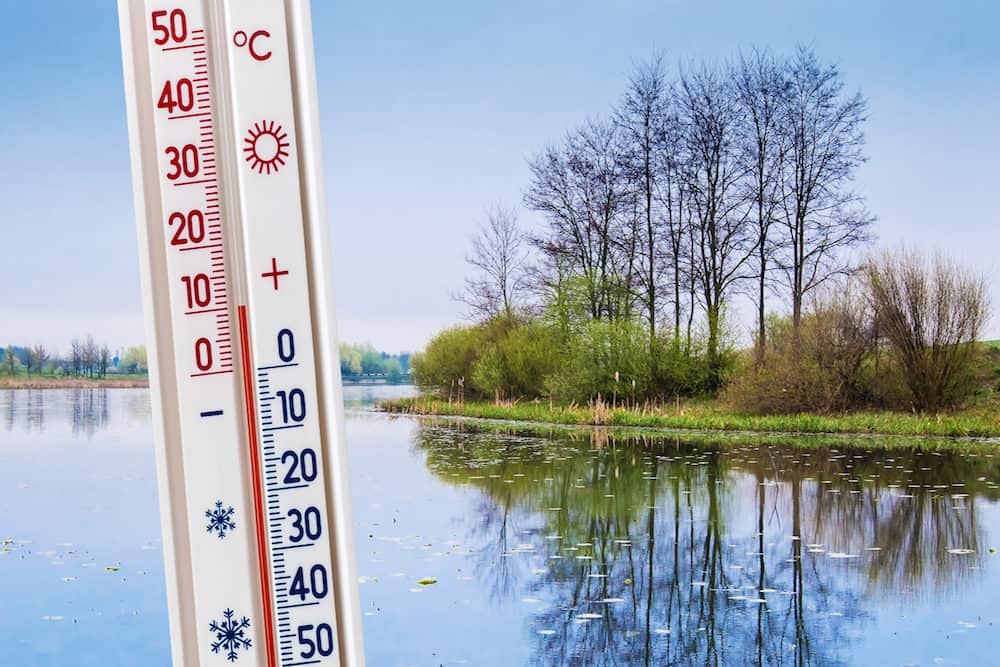
A fish's metabolism and activity adapt to the water temperatures they live in. Therefore, water temperature management should be constant to maintain an ideal habitat for omnivorous feeders all year round.
What's ahead?
Koi fish are adaptive, and experts say they can survive in temperatures as low as 1°C and as high as 30°C. However, the temperatures are extreme for the fish.
Koi are cold-water fish that thrive in temperatures ranging between 15°C-25°C (59°F-77°F).
Koi fish are resilient but don’t do too well in extreme weather conditions. Here are some consequences for Koi fish when the water is too cold or too hot.
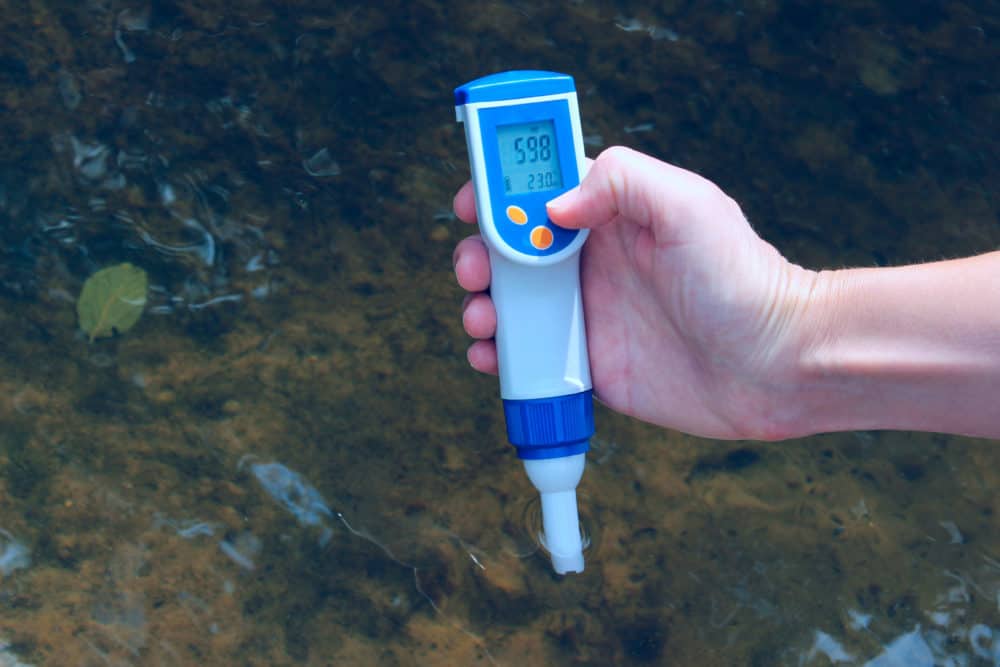
The immune system is more active when the water is about 15°C. However, as the temperatures drop, pathogens in the water start becoming active. During winter, the koi fish's immune system may not be good enough to fight the parasites, making them more susceptible to illness.
Warmer water makes koi fish vulnerable to diseases caused by toxins produced by algae when the water temperature rises.
Warmer water dissolves more ammonia and less oxygen, making it toxic for the fish.
Koi fish internal systems slow down as water temperatures drop. Therefore, during this time they feed less. In addition, any food trapped in the digestive system as the temperatures drop may rot in the digestive system and cause the death of the fish.
Water temperature influences koi fish health and feeding patterns. At ideal temperatures of 15°C-25°C, the metabolism is optimum. However, at temperatures above 28°C, bacteria are active.
Warmer temperatures affect the oxygen levels in water and dissolve toxic compounds like ammonia. Processes that impact the activity, growth, and health of koi in the pond rely on oxygen.
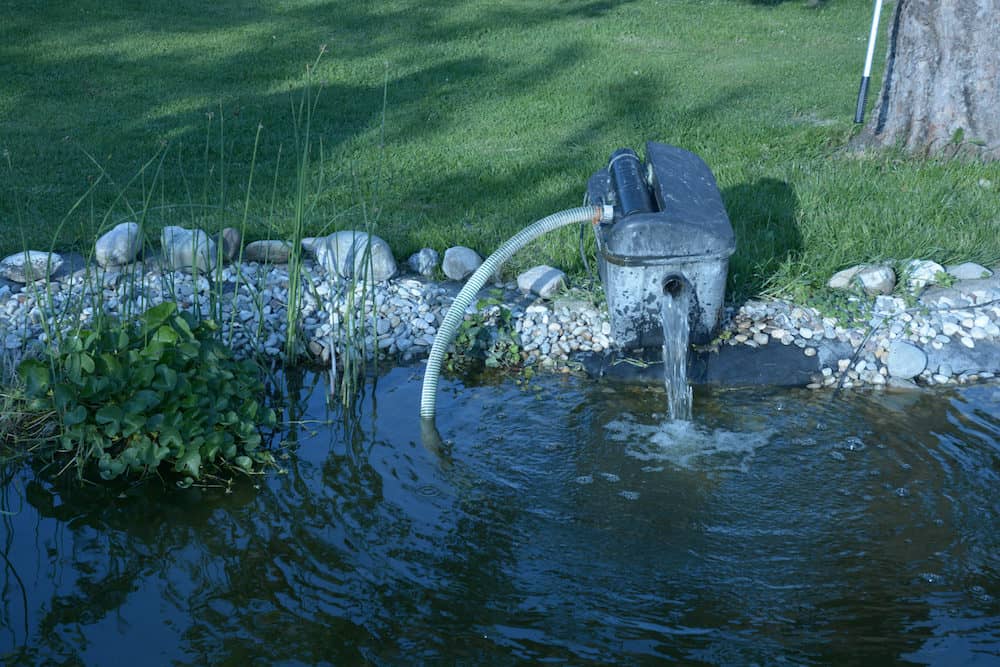
Extreme temperatures impede the health and survival of koi. Therefore, water temp management for ponds and tanks is necessary to keep the fish safe and healthy. Having a reliable pond thermometer can help keep track of any water temperature change that could potentially be harmful for the inhabitants of your koi fish pond.
Hot weather can cause the death of koi in ways like oxygen deprivation and pathogenic diseases. Here are tips to keep a koi pond cool during the summer heat.
Changing water can keep the pond water cool during summer. Koi fish are more susceptible to illness in warm ponds. Changing about 10 percent of the water in the pond will enhance aeration and keep temperatures at the optimal level. The best practices for pond water circulation are:
Since koi are sensitive, small and regular water changes are recommended to give the fish enough time to adjust to the conditions.
The easiest way to change the water is using a pond vacuum or submersible and external pumps for larger ponds.
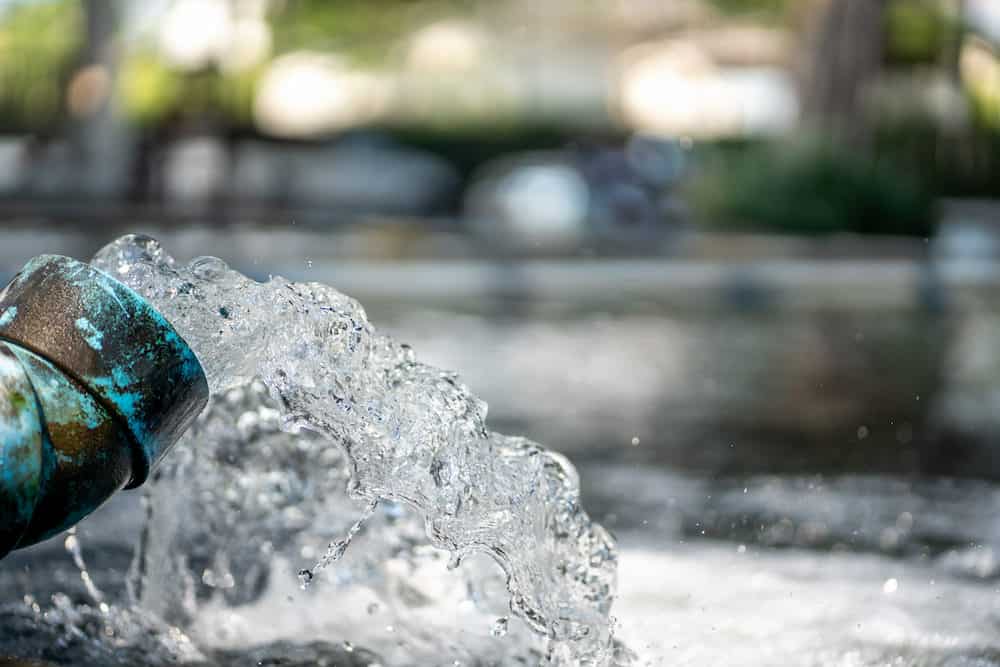
Mains water must be treated for chloramine and chlorine before refilling, as the compounds can be toxic to the pond ecosystem. Installing an activated carbon catalyst at the end of your hose will eliminate the compounds as the water passes through to the pond.
Beneficial bacteria and nutrients are usually lost during the water change. Therefore, after refilling the pond, nutrients should be replaced by adding koi clay to the water.
Water parameters should be tested after the change for nutrients and temperature.
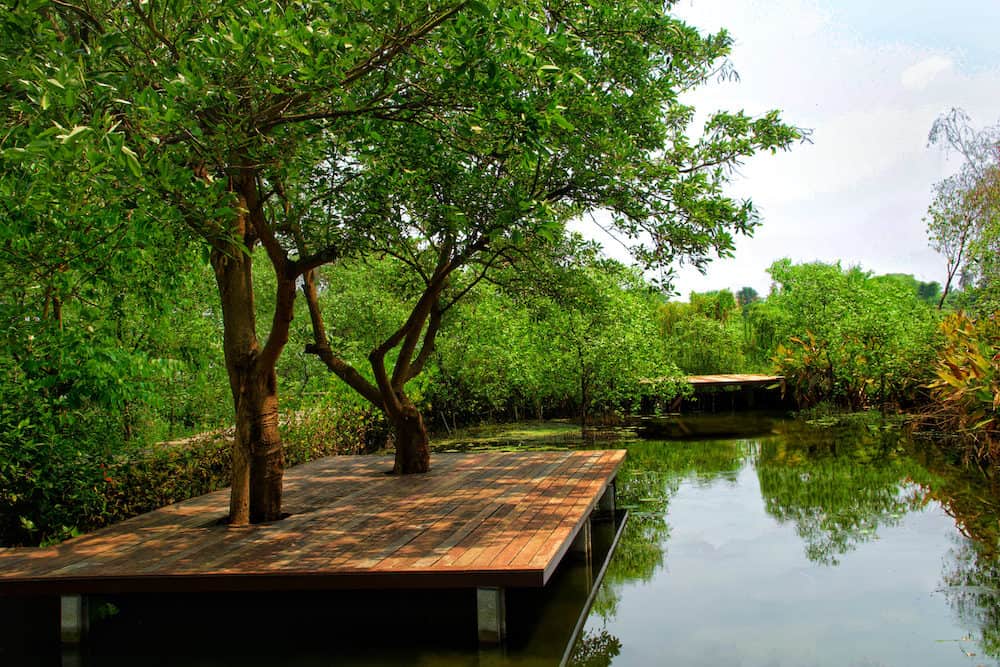
Limiting exposure to UV can keep a koi pond cool. Adding a porch umbrella is an artificial way to provide shade.
Floating pond plants like water Hawthorne, blue flag, marsh marigold, and horsetail will add shade and increase oxygen levels in the pond.
Stagnant water heats up quicker than circulating water. So a bubbler, waterfall, or water jet moves the water around the pond keeping it cool.
It may sound odd, but adding ice to a pond helps, especially if it is a location with sweltering summers. Depending on the size of the pond, a gallon or half-gallon of ice can work. It is a simple and affordable trick to cool the water.
Regardless of circulating water, changing water, or employing other pond cooling methods, the fish will still struggle with warm water if the pond is not deep enough.
Shallow ponds receive too much sunlight during the summer months compared to their deeper counterparts. They are also likely to dry up faster due to the summer heat.
In preparation for hot weather, relocate koi fish to create space to make the pond deeper.
Avoid overfeeding fish during summer. Uneaten food decays faster in warm water resulting in high levels of toxic ammonia that can kill fish.
Clean the pond during summer to clear dried leaves and plants as they also produce ammonia. Installing a skimmer system will keep the pond clear of ammonia-producing debris.
If the pond water freezes, koi fish will not survive the winter. A sealed water surface will reduce oxygen levels and increase toxic gases in the pond.
Heating your pond provides the perfect environment for koi throughout the season. Here are guidelines to keep the pond warm during winter.
Snow and ice floating at the top of the pond is not part of the winter koi kill problem. Instead, it serves as a layer of insulation that keeps aggressive winds and the resulting unsettling temperature fluctuations at bay.
If the pond is in regions with colder winter temperatures, it is best to keep the ice but poke a hole to allow gas exchange.
A pond cover will double as a greenhouse; maintain the pond's temperatures, and keep the water warm. The water will warm through the day; then, the warmth will be trapped in preventing harmful temperature fluctuations during the night.
The cover also prevents winds from sweeping across the pond. Some koi farmers use a floating plastic sheet to cover the pond's surface to keep cold air away and keep the water warm.
Using a solar cover and running an air pump would be a brilliant idea to keep the pond from freezing.
This provides the most convenience when warming pond water. Heating systems vary and have different heating capacities in terms of water volume.
These are efficient in circulating warm water from the heating chambers to the entire pond. In addition, the system is consistent with the process, which prevents the pond water from freezing.
This is a less expensive option compared to the inline boilers. A deicer floats on the pond's surface; however, it does not warn the water evenly. Nevertheless, the device effectively creates a hole at the pond's surface to make a passage for gases.
If your pond is big and has many fish or water plants, you will need several de-icers
Switch off summer water-cooling features like the water pump, filter, and fountain. They expose water to cold air and chilly winds causing the temperatures to drop dramatically.

The pond is more likely to freeze when they are running.
An air pump will de-gas the pond and keep a hole in the ice to prevent the pond from completely freezing.
It will also be more economical than a boiler. The pump will also circulate oxygen in the pond keeping the fish alive for months.
This will work if the fish are small and not too many in the pond. If you have the resources and time, you can build an indoor pond. Alternatively, you can buy an aquarium with temperature control and transfer the koi.
Temperature ranges between the pond and aquarium must be close to avoid stressing the fish. The water temperatures are likely to be different. Ensure the difference is less than 10 degrees by turning off the heater.
The process can be taxing, but ponds with adequate length are less likely to freeze entirely. Ensure your pond is at least 4 feet deep so that the fish can have a warm section to cuddle up and protect themselves from becoming raccoons and other predators’ buffets.
As much as koi can withstand extreme temperatures, it does not mean they are comfortable in cold water. If all the water in the pond freezes, the fish will die. Koi can survive in a pond with a frozen surface. However, if they cannot come to the surface to breathe, they will end up dying.
Adequate preparation is the best chance of keeping the fish alive throughout the season. However, frozen water is not the only threat to look out for. Organic matter like dried leaves and plants can significantly weigh down the quality of water in the pond.
Removal of organic matter and debris is vital before winter.
Building the right pond keeps koi fish safe through all seasons.
Things to keep in mind include:
The pond should be big enough to accommodate the koi and allow room for growth: the recommended size is at least 4 feet deep and sufficient to accommodate 500 gallons of water. The right size will ensure there are adequate resources for the fish to thrive.
The right temperature will keep the fish healthy and safe. Building the pond in a shaded area will help maintain comfortable temperatures between 15°C and 25°C during scorching summers.
Your koi's immune system and overall health is directly impacted by the care and attention you give to the environment in which they live. Japanese koi fish are beautiful additions to any indoor or outdoor pond, but in order to thrive, be sure to provide them with what is necessary to ensure a long, healthy and happy life.



